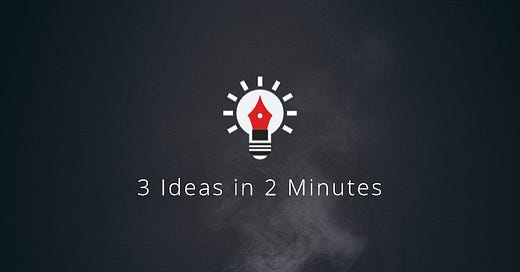#192: Thought Control, Gut Feelings & the Philosophy Paradox
3 Ideas in 2 Minutes on How to Think for Yourself
I. Thought Control
American novelist David Foster Wallace took over 20 years to figure out what it really means to learn how to think. Here’s an excerpt from his 2005 commencement address at Kenyon College:
Twenty years after my own graduation, I have come gradually to understand that the liberal arts cliché about teaching you how to think is actually shorthand for a much deeper, more serious idea: learning how to think really means learning how to exercise some control over how and what you think. It means being conscious and aware enough to choose what you pay attention to and to choose how you construct meaning from experience.
—David Foster Wallace, This Is Water
II. Gut Feelings
That can also mean listening to your Gut Feelings, which are anything but arbitrary second-class ways of coming to a decision. German psychologist and heuristics expert Gerd Gigerenzer knows:
Thinking for yourself is not limited to knowing your own biases and controlling how you come to analytical judgements. It also means to know when to use heuristics and trust your gut.
—Gerd Gigerenzer
For example, you may have a gut feeling that I’ve quoted Gigerenzer on gut feelings before. And you’d be right.
III. Philosophy Paradox
What thinking for yourself is also not limited to is the passive consumption of philosophical content. Critical thinking requires active engagement, questioning and application. Or as essayist Nassim Nicholas Taleb put it:
It is lacking in critical thinking to think that studying philosophy will improve your critical thinking.
Nassim Nicholas Taleb, The Bed of Procrustes
👉 For more insights into how to think, check out my article on 26 Powerful Critical Thinking Quotes. 🐘
Have a great week,
Chris
themindcollection.com



